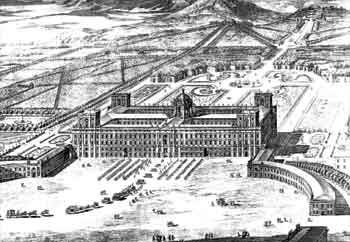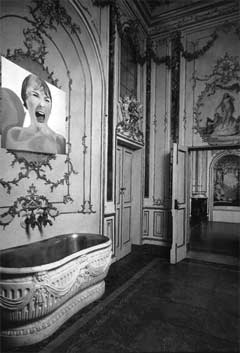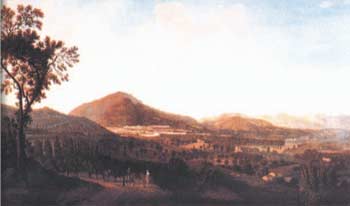
REGGIA DI CASERTA
Via Douhet 22
tel. 0823/277111
![]() critical
text by Massimo Sgroi
critical
text by Massimo Sgroi
Tony
Corbo and Riccardo Battaglia's creative approach to the works in the museum
is a mediation between contemporary aesthetics and collective stratification
of memories. The Royal Palace of Caserta is a mental landscape on which
other landscapes settle. Tony Corbo's work is a metropolitan landscape
inspired by a scene from the past painted by Antonio Veronese; an extension
of Arcadia, spoiled and contaminated by contemporary urban architectural
horrors that drown it out with all their violence. The deprivation of
its original colour takes the landscape back to a dimension that was not
envisaged by the 18th century painter. The same mountain, distant in time
and shape, becomes a forced time extension and it takes contradictory,
broken and dissonant values, almost to mean that the man of the third
millennium is not able of preserving anything without superimposing his
destructiveness. The drastic choice of taking the colours off indicates
a radical choice which is not regardless of the past but claims its right
to find new forms of vision.
Riccardo Battaglia's installation follows the path traced by Tony Corbo's
work. A painting, a revisitation of one of the most famous scenes in the
history of cinema (Janet Leigh's scream under the shower in Psycho) set
by the artist in Queen Mary Caroline of Austria's bathroom. The Bourbon
queen's everyday life mixed with the iconic image of murder, an overlapping
of images that confounds the visual perspective of the viewer. Ferdinand
IV's wife becomes the woman destined to die a violent death in Alfred
Hitchcock's film, almost as cinema was part of the Bourbon history and,
on the contrary, the dinasty of the Kingdom of the Two Sicilies could
penetrate through a strange side thought in the history of contemporary
cinema.



